[This is the ninth post in my series on my mission to Israel. You can read Parts I, II, III, IV, V, VI, VII, and VIII.]
After our mission left the Nir Oz Kibbutz, we traveled to the site of the Nova Music Festival. Think of burning man (not that I've ever been): a music festival in the middle of the desert. On October 7, this festival was being held close to the Gaza Border. According to some reports Hamas was not even aware this gathering would occur. Rather, the terrorists happened upon the festival. They murdered more than 360 civilians in cold blood, and took about 40 as hostages.
These were the last people in the world who would ever want war, or even think about politics. For lack of better word, they were hippies–committed to peace, love, and happiness. As it was described to me, the music festival raged throughout the night, and around sunrise reached the crescendo. That is when the missile attacks began. And shortly thereafter, terrorists approached the complex and began to murder. People tried to drive or run away, but they were shot and captured on the one road to the festival.
This post, like my others, will have some sensitive content. I encourage you to read on, with care. Moreover, this post does not have any particular structure. Rather, it reflects my observations, as I recall them.
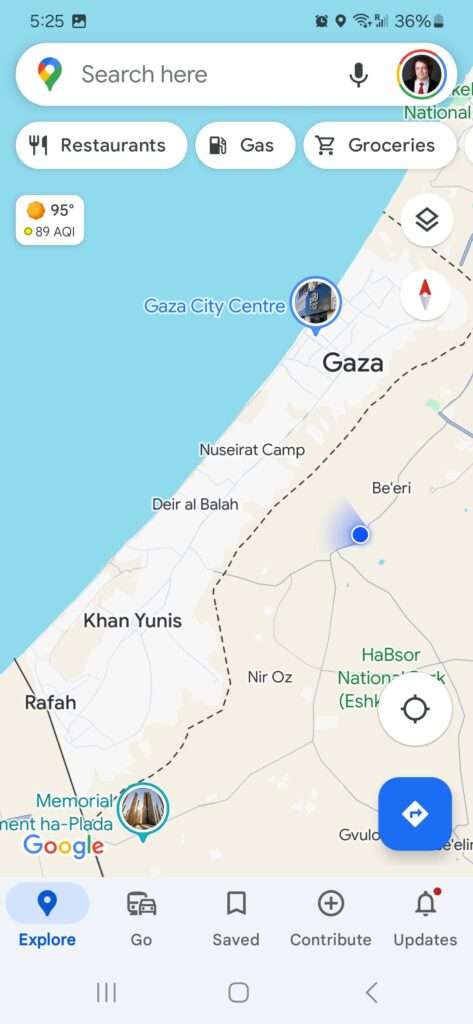
Memorials
The music festival was held in an open field in the middle of the desert. Burning man is the closest analogy I can think of. There were no permanent structures for miles. Other than some portable toilets and bars, the people attending were one with nature and the music.
Today, the field consists of a series of memorials. Everywhere you look is another remembrance of the people who were killed or taken hostage. I was struck by how young and beautiful these people were. They looked so joyful, and had so much life ahead of them. They simply wanted to attend a music festival to enjoy themselves.
Many of the attendees were on various controlled substances, including hallucinogens. I do not mention this fact to cast any aspersions on them. Rather, being under the influence gave them an extra edge that may have helped to save their lives under extremely stressful situations.
Families of the hostages and victims mass-produced stickers to remember their loved ones. You see these stickers plastered on signs and buildings throughout the country. At the music festival, they were everywhere.
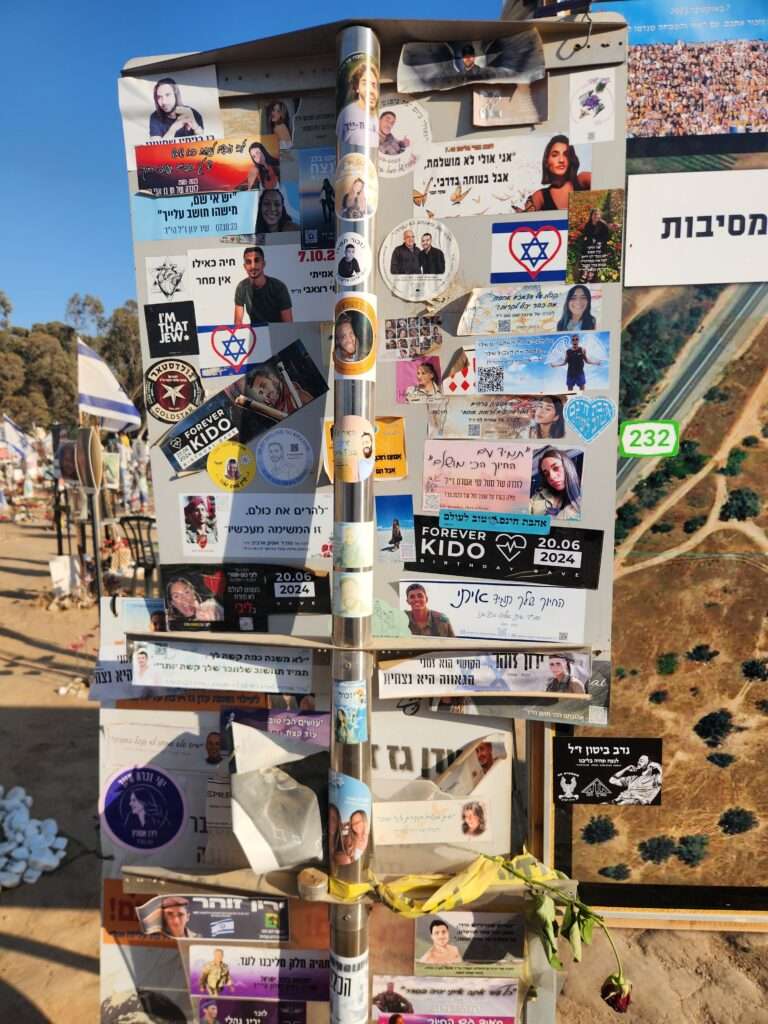
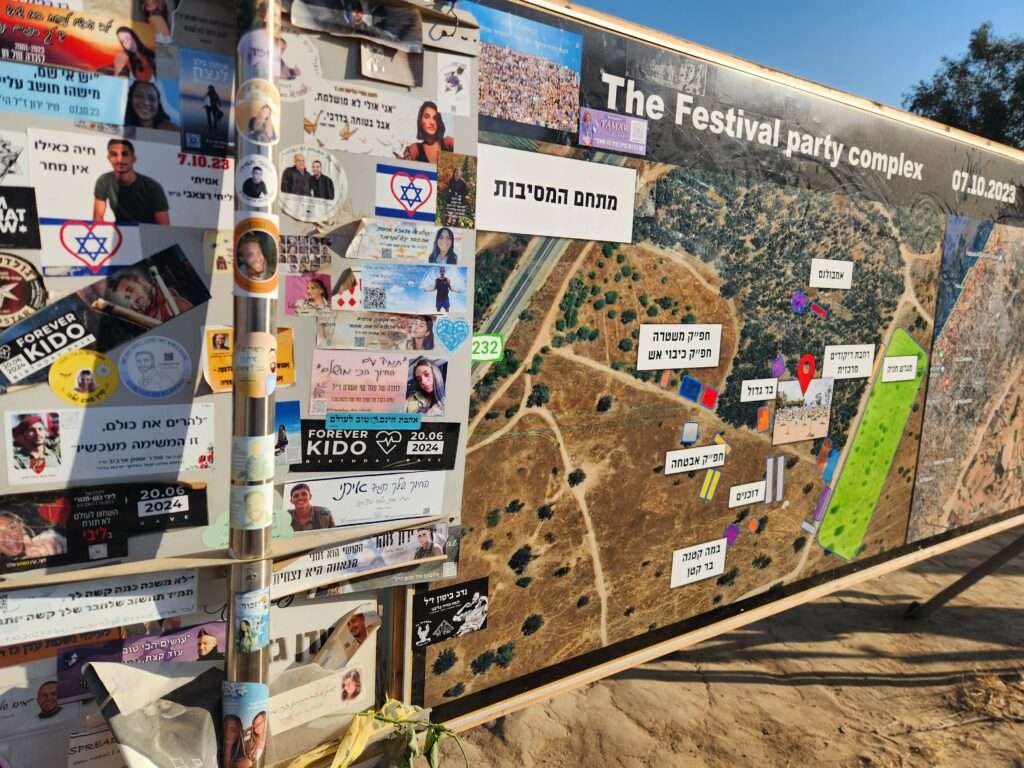
There was a large display for this individual. I did not catch his name, but he managed to escape, but went back to rescue others several times. He was killed upon his final return.
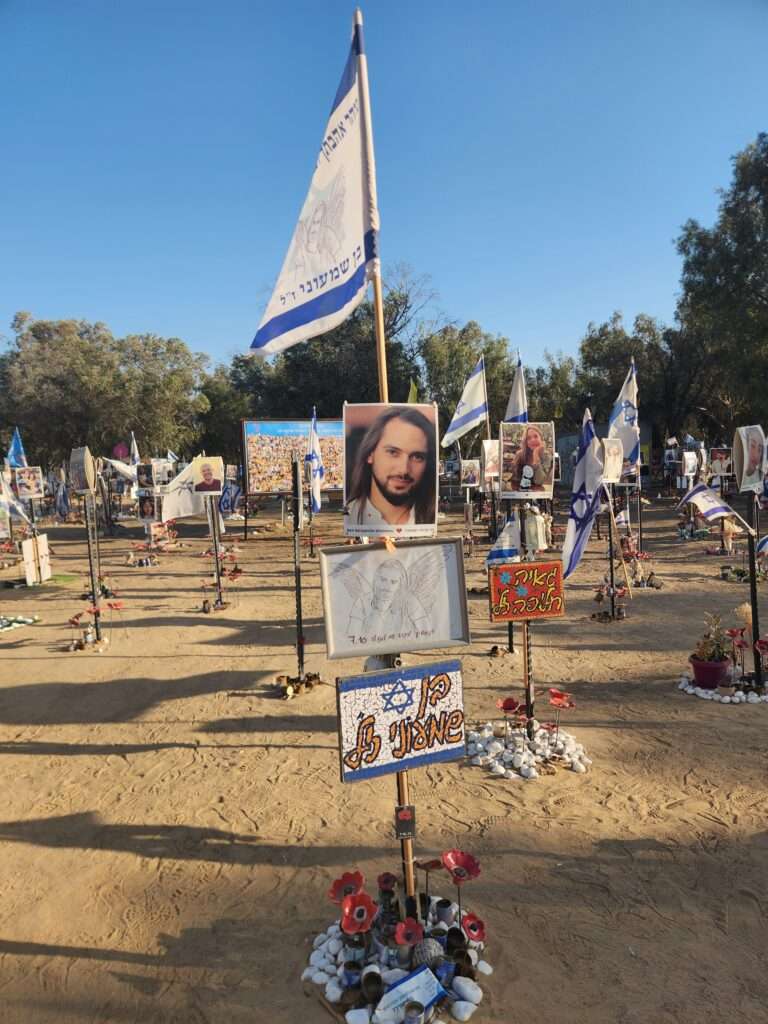
I do not think I have any relation to Yakir Blochman, but our names are very similar.
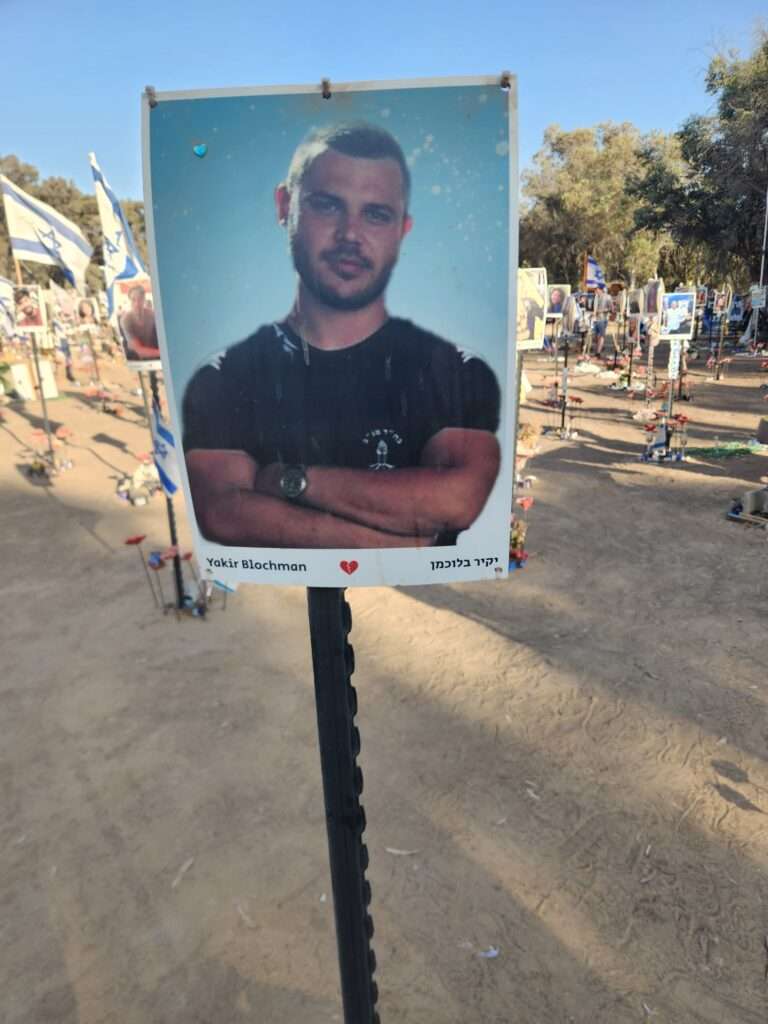
There were row after row of Jewish flags. They reminded me of the Fields of Flanders, which were discussed in the Bladensburg Peace Cross case. But in that case, as Justice Ginsburg's dissent pointed out, there were only a few scattered Stars of David. But here, virtually all of the deceased were Jewish.
Several families put up detailed remembrances that described who their loved ones were.

Shanai Gabay's family published a minute-by-minute account of how she died. With all of the surveillance footage, this sort of play-by-play is possible. I don't know if it is comforting, or traumatizing to have such a intricate roadmap. The poster was titled "Shanai Gabay's Black Saturday."
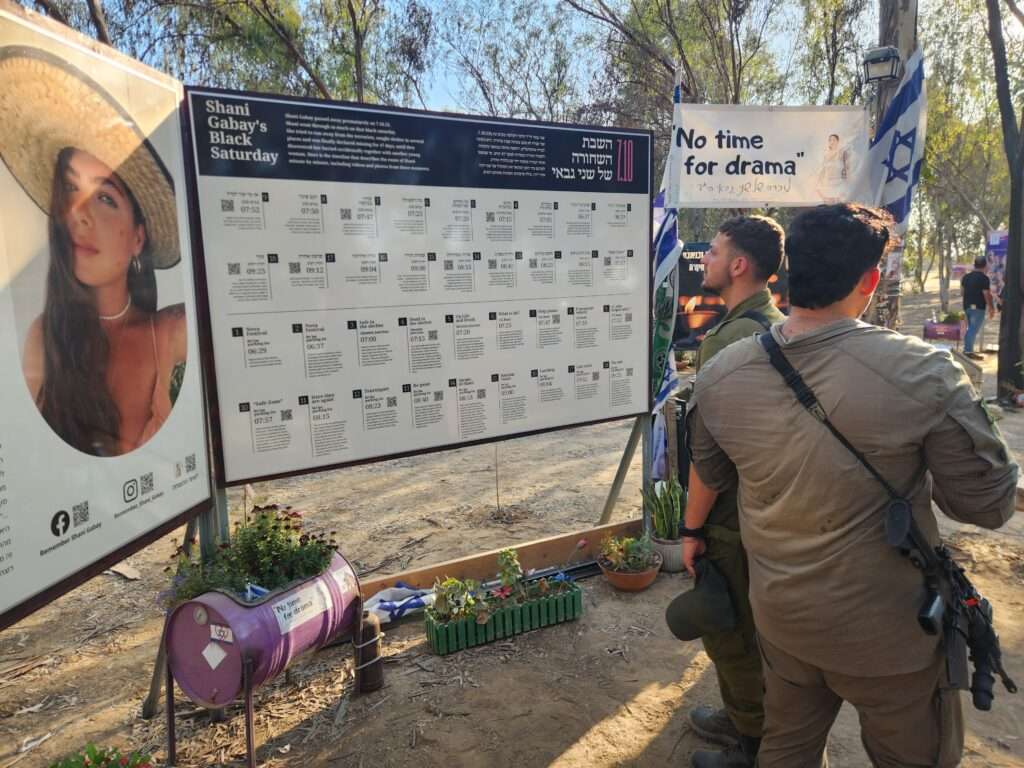
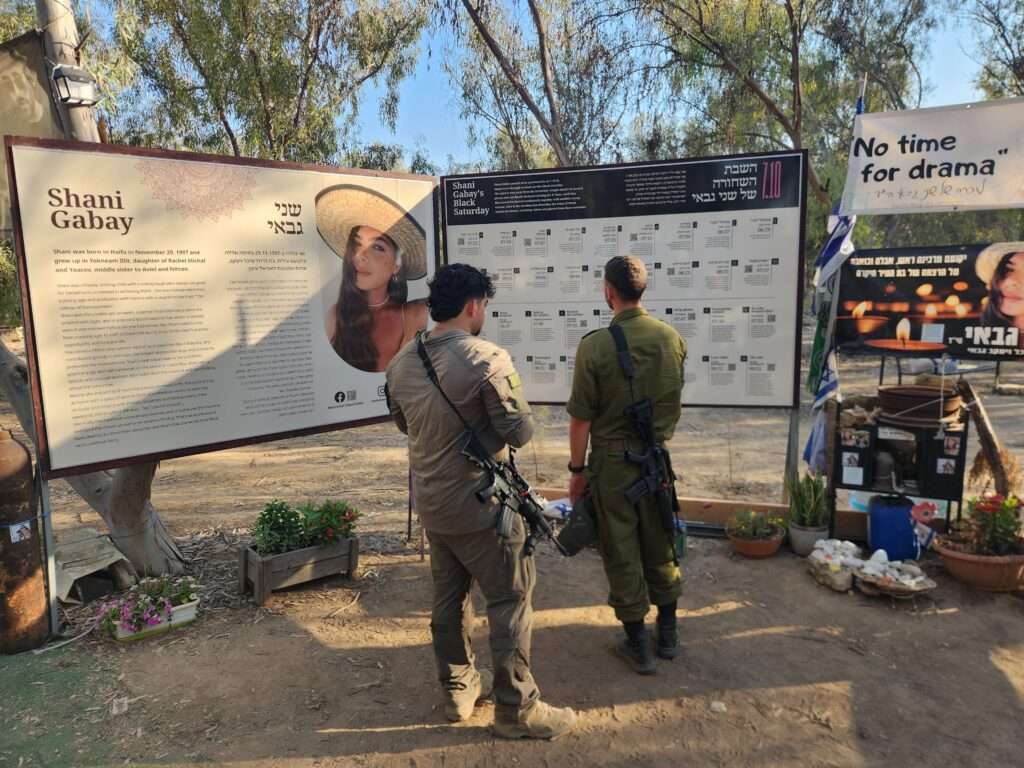
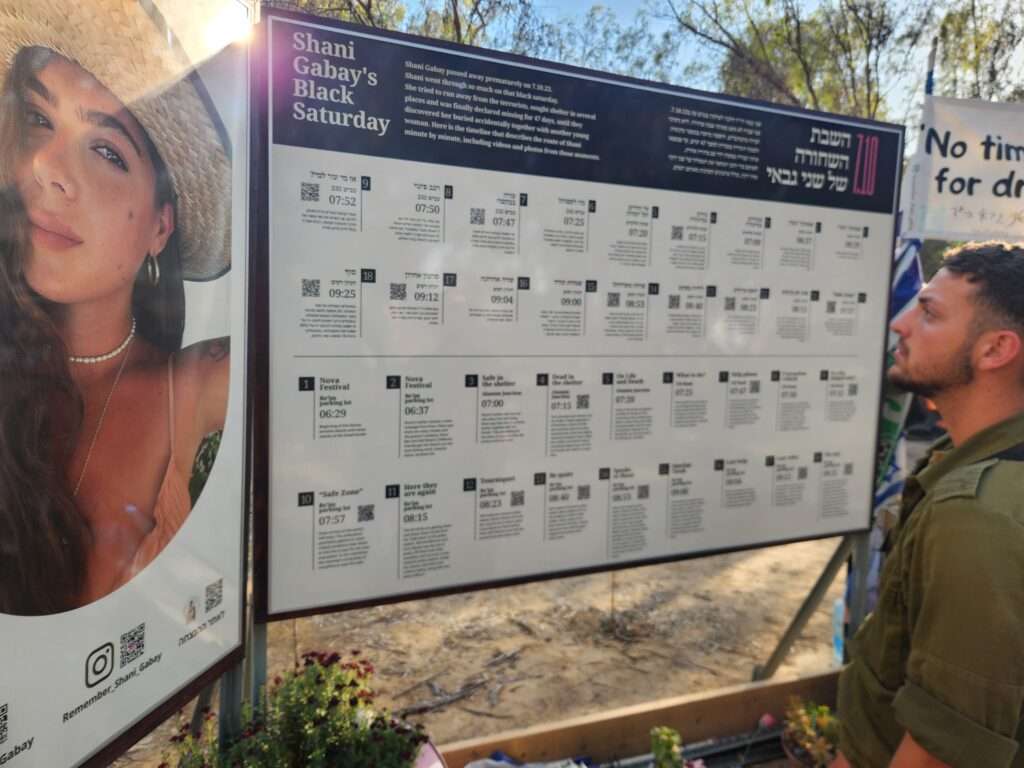
In her last moments, Shanai was hiding in an ambulance. The terrorists threw a grenade into it, shot at those lying underneath, and fired an RPG missile. Approximately eighteen people were burned alive. I will return to the ambulance below.
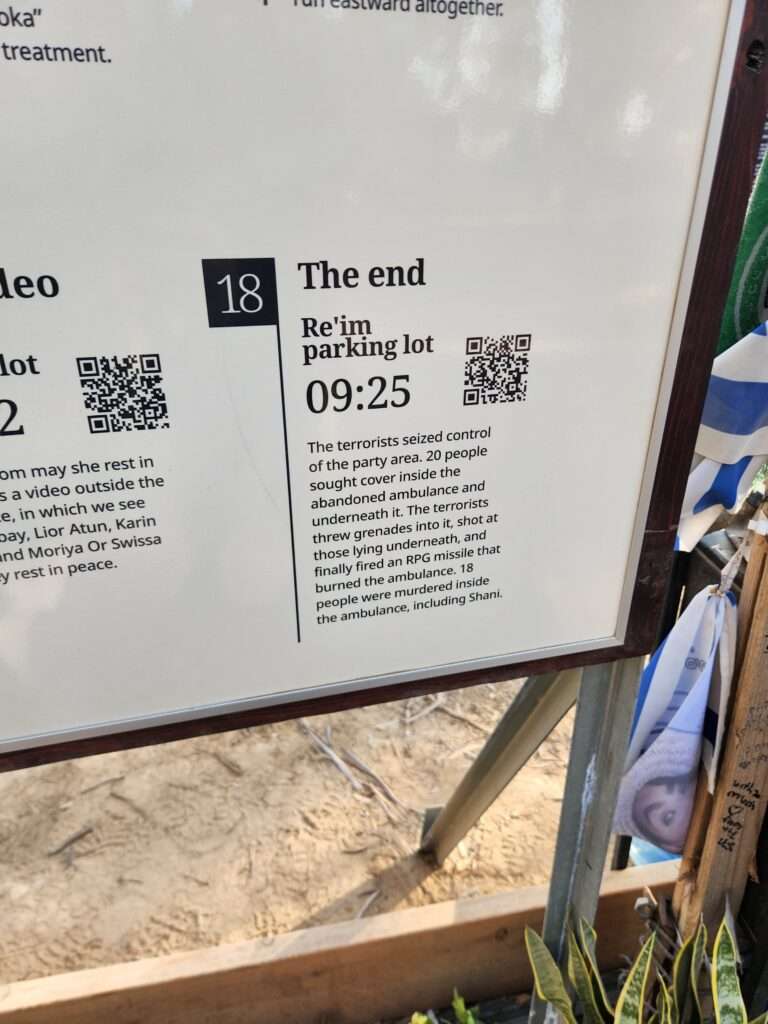
This collage of all of the murdered people and hostages was very moving.

Testimony of Bar Hinitz
During the visit, we heard testimony from Bar Hinitz. Bar was attending the festival. He stressed how joyful and happy the festival was. Early in the morning, as the sun was rising, the people started to get alerts on their phones of missile attacks. Soon, they started hearing explosions, and they began to scatter. Bar managed to get to his car. He was supposed to turn right on the main road (to go away from Gaza) but he inadvertently turned left (toward Gaza). That decision likely saved his life. Had he turned right, he would have encountered Hamas militants who were shooting at cars and burning them to the ground. Bar described making the wrong turn as his "lottery" ticket. Bar would soon be forced to abandon his car and had to flee on foot. He spent some time in hiding, and thankfully, lived to tell his story.

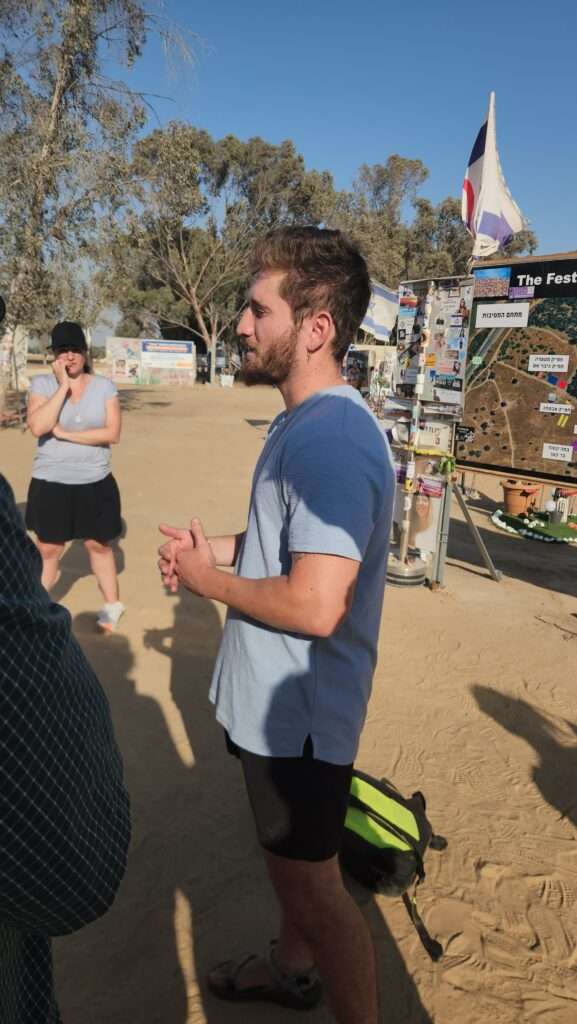
This was the backpack he carried with him as he fled from the festival. He called it his lucky backpack.

Bomb Shelters
Surrounding the festival were several bomb shelters. Our security team told us that if we heard a missile siren, we had approximately seven seconds to get a shelter. It would be very unlikely to make it to the shelter. We were told to simply drop on the ground.
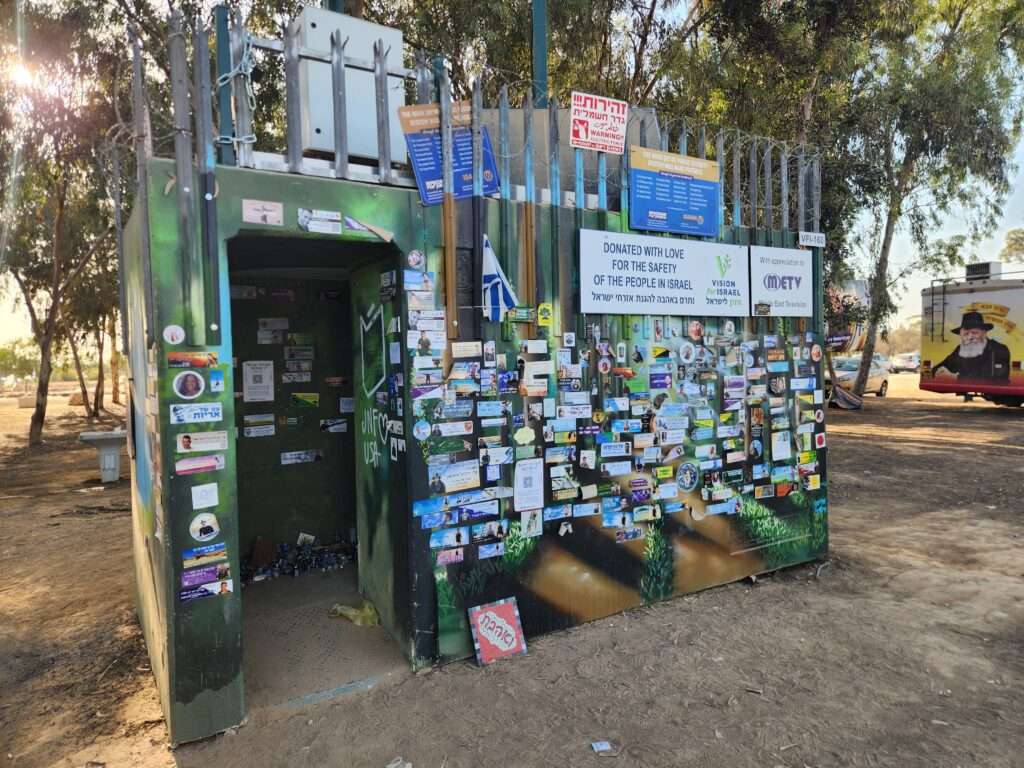
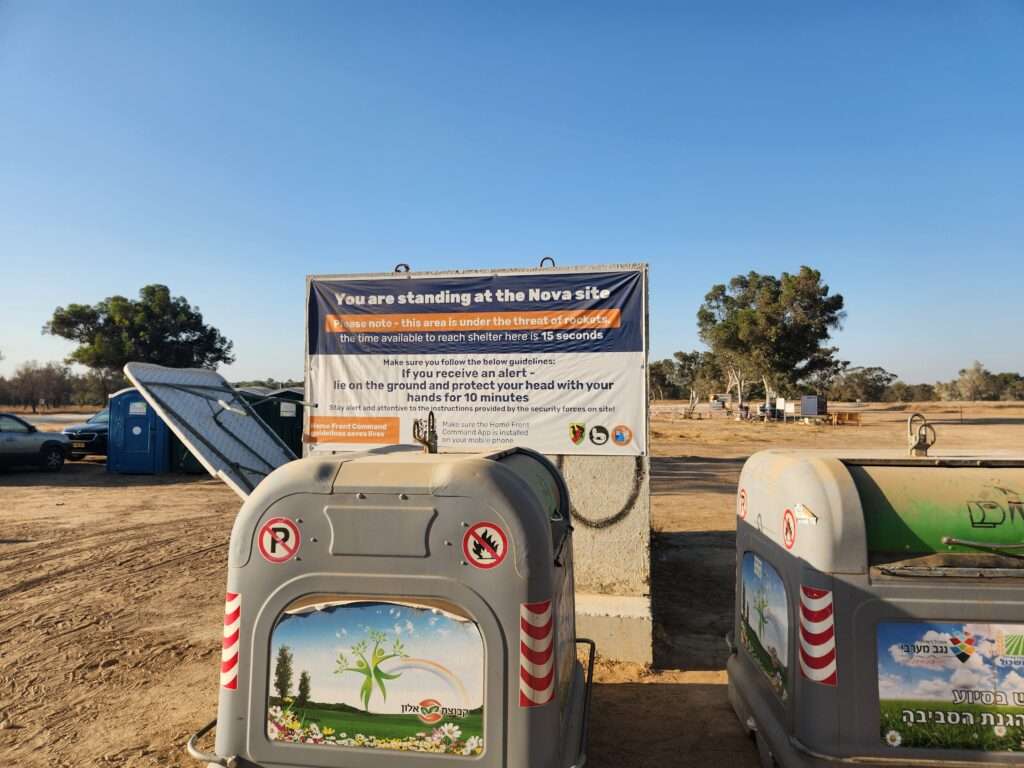
The Car Cemetery—Tekumah
In the aftermath of October 7, about 1,600 cars were abandoned throughout the region. In some cases, the drivers and passengers were able to escape, and they fled on foot. In other cases, the drivers and passengers were shot in the car. And in other cases, the terrorists set the cars on fire, and burned people alive. There was one ambulance near the music festival where many people were hiding. Hamas incinerated the ambulance. Human remains from eighteen different people were found inside.
In the Jewish tradition, every last particle of human remains is to be buried. And these cars were carefully inspected to ensure that all remains were treated with respect. But what then to do with all of the cars? The vehicles were moved to an area known as Tekumah, basically a huge field a few miles from the Gaza border. From a distance, you might think it was a huge used car lot. But if you look more carefully, the vehicles are riddled with bullets, and in many cases are burned to the frame. There is a wall of burned-out cars, nearly twenty feet tall
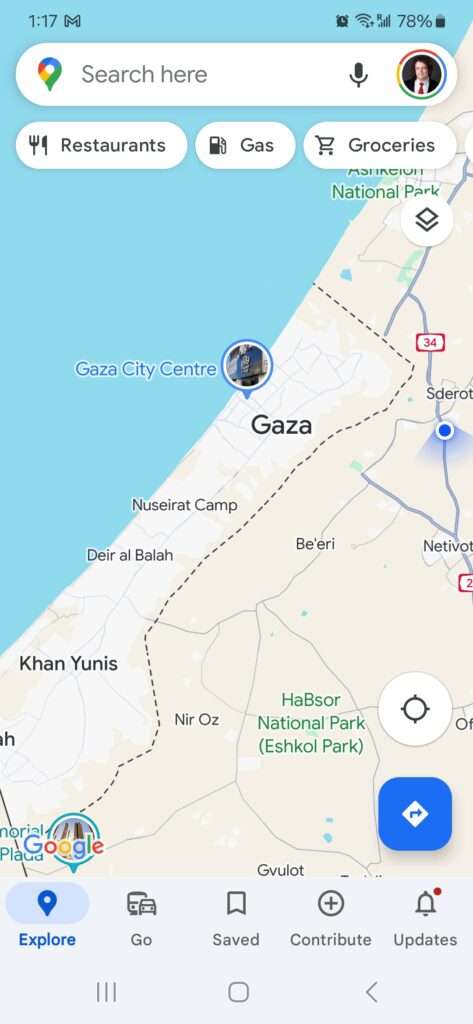
These photos and videos depict the horrors of the car cemetery. We received a briefing from CPT. (Res.) Adam Ittah, Spokesman of the Southern District, Home Front Command, Israel Defense Forces. There were also motorcycles and two pickup trucks used by the terrorists. There were machine guns installed on turrets in the bed.
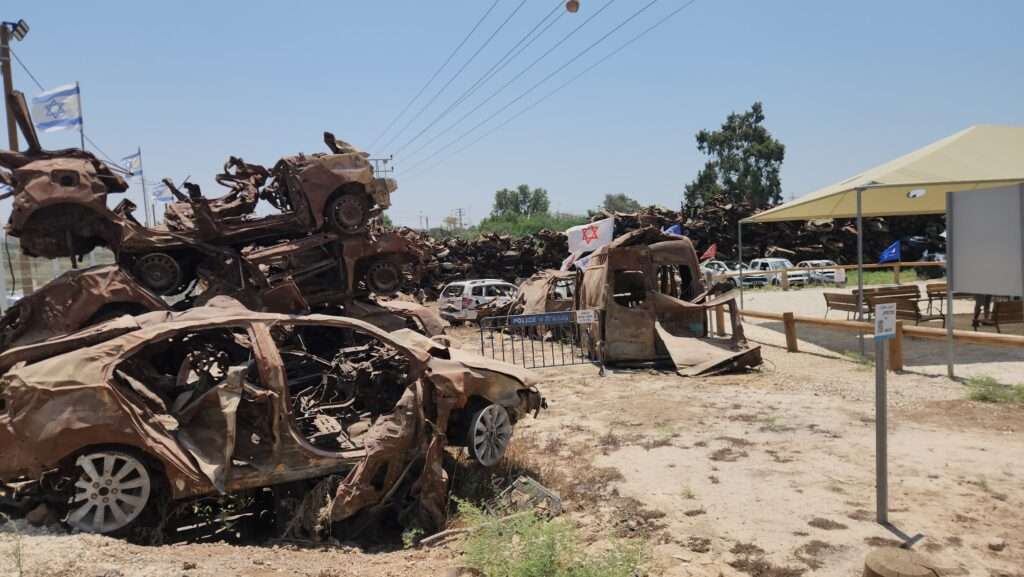
This is the ambulance that Shani Gabay was murdered in.
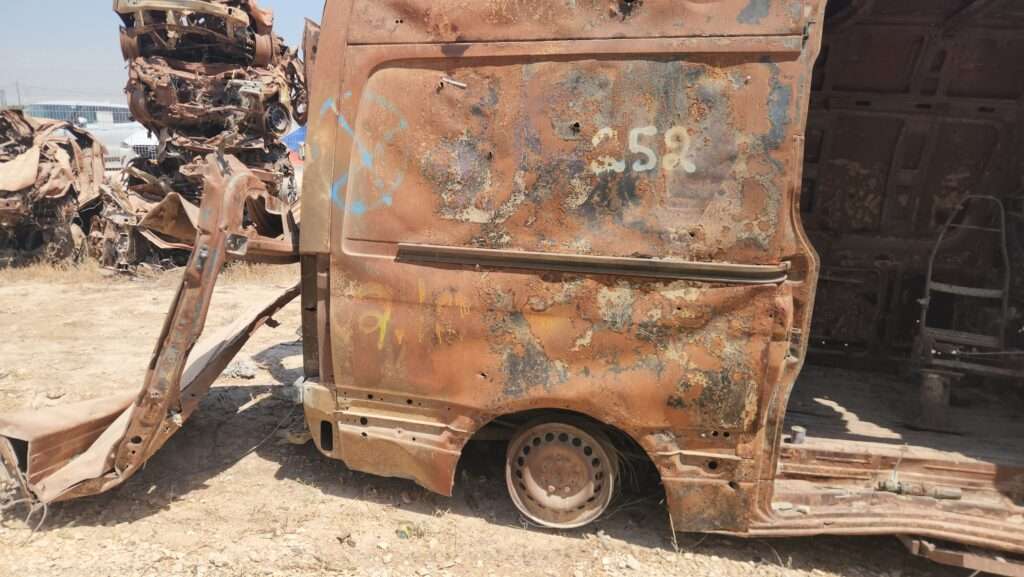
The bodies were so badly burned that they had to use DNA analysis to identify the remains.
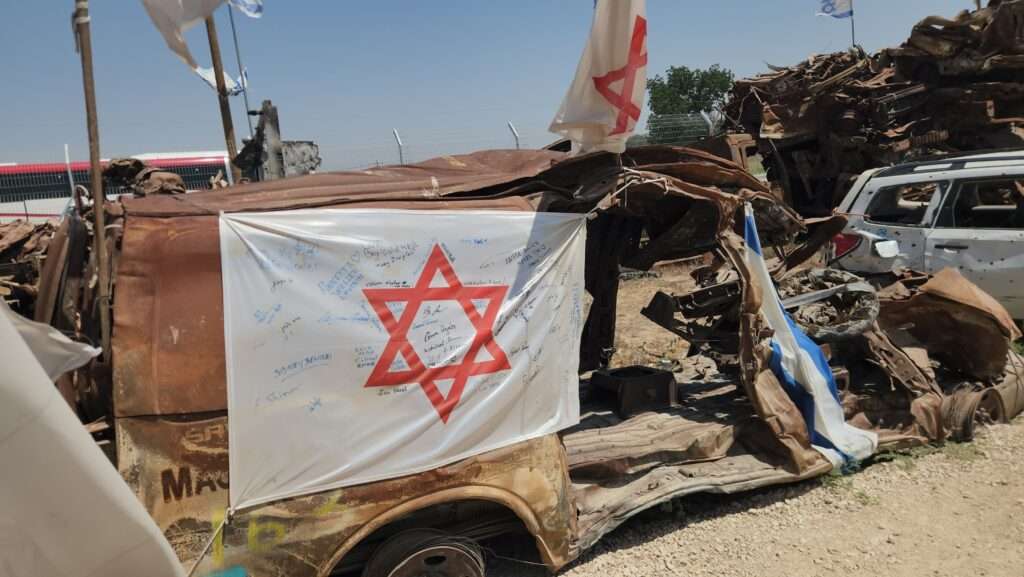
This car is riddled with bullets, the windows were shot out, and the front was smashed.

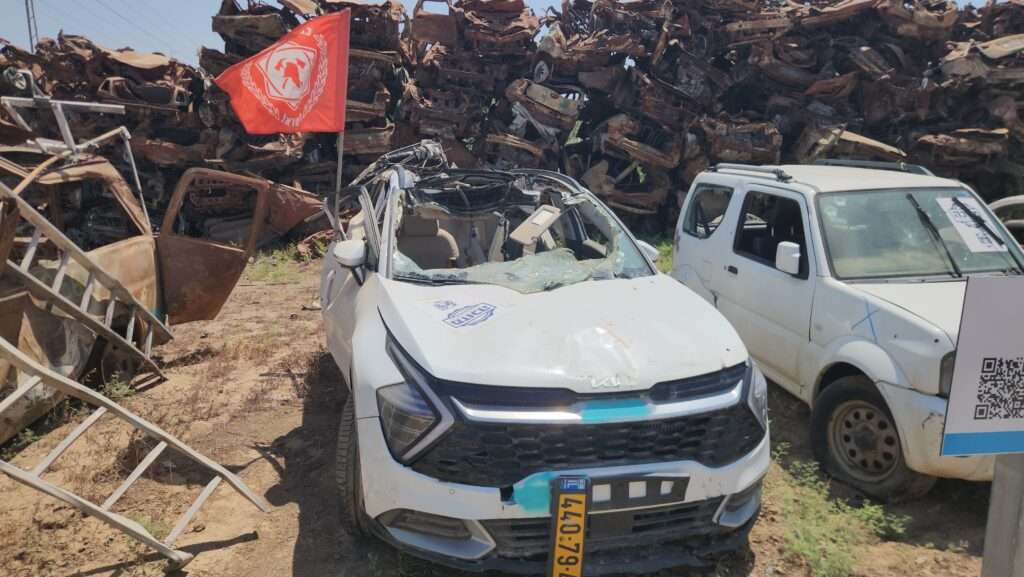
This was the car of the person who drove back to the festival to rescue others.

This Dodge pickup was used by the terrorists to murder Israelis. You can see a machine gun turret in the back. I have no idea how a Dodge pickup made its way to Gaza. As a general matter, there were very few American cars in Israel. I saw only a handful of American pickup trucks.
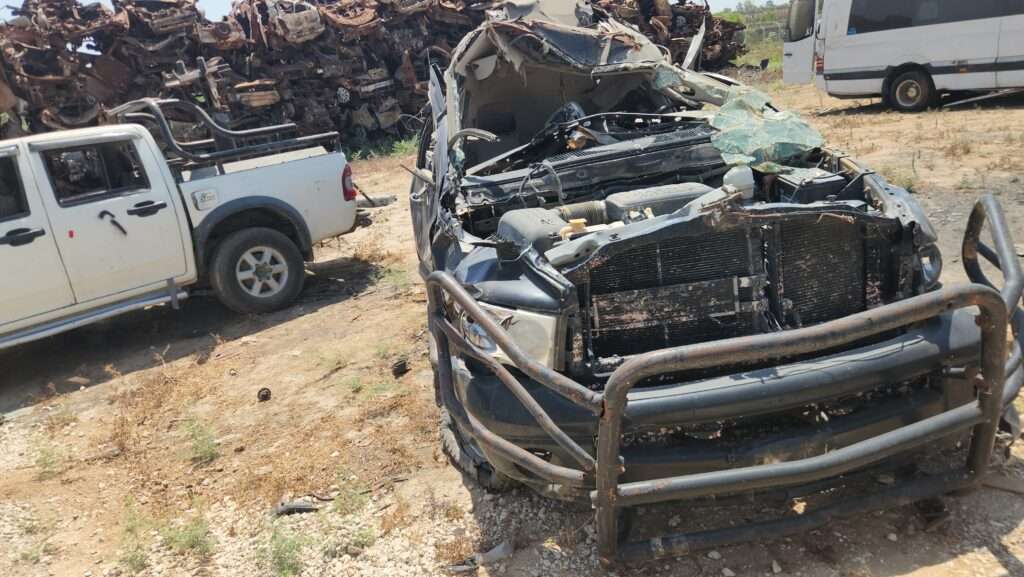


The post Mission to Israel Part IX: The Nova Music Festival appeared first on Reason.com.







